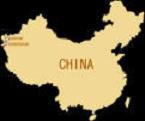
| ABOUT | ||
| SMALL BUSINESS TRENDS brings you daily updates on trends that influence the global small business market. | ||
 |
Anita Campbell, Editor | |
| Past life: CEO, corporate executive, tech entrepreneur, retailer, general counsel, marketer, HR ... (more) | ||
| email me | ||
 |
 |
||
| FREE BUSINESS MAGAZINES | ||
| Trade publications FREE to qualified professionals. No hidden offers and no purchase necessary. | ||
|
On Wall Street The Deal Computing Canada |
CIO Employee Benefit Oracle Magazine |
|
| 100+ additional titles. Click to browse. | ||
 |
| ARCHIVES & SEARCH | |||
| Previous Small Business Trends articles can be found at the links below: | |||
|
October 2003 November 2003 December 2003 January 2004 February 2004 March 2004 April 2004 May 2004 June 2004 July 2004 August 2004 September 2004 October 2004 November 2004 December 2004 January 2005 February 2005 March 2005 April 2005 May 2005 June 2005 July 2005 August 2005 September 2005 October 2005 November 2005 |
|||
|
Or, use the search box below to find a specific post: |
|||
 |
| NEWSLETTER |
| Sign up for our FREE Small Business Trends newsletter. (View Current)
We publish regularly and promise we won't share your email address with anyone. (Privacy Policy) |
 |
 |
| SMALL BIZ INFO & RESOURCES | |
 |
| BLOGS TO READ DAILY* | |
| * Don’t have time to read several dozen blogs a day? Pick two or three. Your brain will thank you for it. | |
 |
| ONLINE COMMUNITIES | ||
 |
| SPECIAL RESOURCES | ||||
| Small Business Trends Radio Tuesdays, 1:00 PM Eastern U.S. time on Voice America network Click to listen November 1st: Torsten Jacobi, CEO of Creative Weblogging, joins host Anita Campbell. Sponsored by Six Disciplines. Show details. |
||||
| Tuesday, March 15, 2005 | |||||
| Chinese Competition's Impact on the U.S. | |||||
|
Editor's note: we are happy to bring you another article by expert guest blogger, John Wyckoff. This month he examines China and what it means for U.S. small business sectors. By John Wyckoff Recent articles such as this one and this one examine a dynamic that will affect just about every small and large business in America. One article talks about the decimation of the U.S. furniture industry. The other examines a similar effect in the textile industry. Both industries in the United States are being severely impacted by China. Furniture making in the U.S. has been a very stable industry. Most wooden furniture has been made in the Carolinas, until now. Enter Chinese-made wooden furniture. They have the quality and technology. Today, many of the well-known furniture brands import components or completed furniture from China. They repackage it and sell it to their dealers. The Southeastern part of the U.S. was also known for its textiles. Now that the quotas have been removed from Chinese textiles you can expect to see the vast majority of clothing sold in this country to be made in China. The textile mills in the Southeast will, more than likely, shrink in number as will those engaged in textile production.
|
|||||
|
| |||||
 |
|||||
 |
 |
||||
| More news... more trends... more insight... | |||||
| Home | Privacy | Terms | SmallBizTrends |
| (c) Copyright 2003 - 2005, Small Business Trends LLC. All rights reserved. |
 The agriculture industry is also being impacted. China is no longer the prime target of U.S. agricultural product exports. They've learned how to produce more using technology we gave them. Today, they are exporters of grain rather than importers.
The agriculture industry is also being impacted. China is no longer the prime target of U.S. agricultural product exports. They've learned how to produce more using technology we gave them. Today, they are exporters of grain rather than importers.